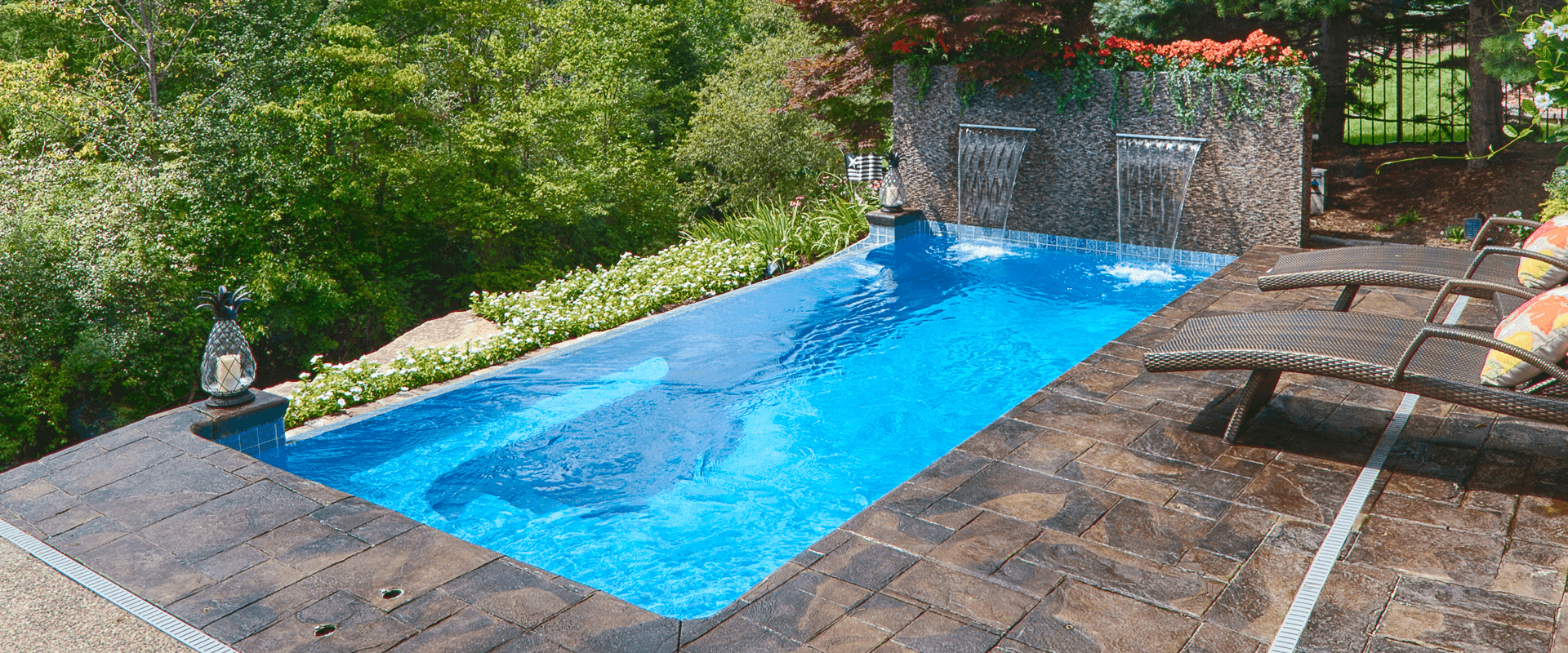877-929-7665
When is the Best Time to Open My Pool?
It’s that time of the year! Spring is finally here! The weather is warming up, and the summer swim season is almost upon us. You may have slept since the last pool opening, or this may be your first season as a pool owner, and you’re wondering when and how to open your pool. As a fiberglass pool shell manufacturer, Thursday Pools doesn’t install or maintain pools. However, we stay informed through independent pool dealers throughout the country. In this post, we’ll share their best pool maintenance tips, including advice on opening your pool.
The Best Time to Open Your Pool
Your pool opening and closing schedule will vary based on where you live. Once you’ve made it past the danger of a damaging freeze, it’s time to kick it into gear. The sooner you open your fiberglass inground pool, the sooner you’ll have fun in the sun with all your family and friends. While you may have already scheduled a pool maintenance pro to help you learn how to open your inground fiberglass pool, you can still do some things to get the ball rolling.
How to Reopen an Inground Pool
- Check your water level. When wondering what is the first thing you should do when opening a pool, you need to check that your water level is up to mid-way on your skimmer before you remove your pool cover. Even with your pool tightly covered, your water level will likely lower over the winter. Groundwater levels are often at their highest in the spring (especially if you have a lot of snow in the winter). If groundwater pressure becomes unequalized, it can cause catastrophic damage to your fiberglass inground pool.
- Remove your pool cover. After your water level is correct, pump off any water on the pool cover. Be sure to pump AWAY from your pool so you’re not just adding more groundwater around it. If you have a leaf blower, you might use that to blow off any leaves or other debris. After that, the process depends on which kind of pool cover you have.
- Automatic pool covers. You may have heard us tout the virtues of automatic pool covers before, and hopefully, you have one. Your pool opening may be easier if you do. Be sure to open it gradually with your touchpad, checking that your cover isn’t sticking or crooked in the tracks as you go.
- Standard winter covers: Your winter cover needs to be adequately removed, cleaned and sanitized to store away for your fall pool closing. Be sure to check with your cover’s manufacturer for removal instructions, as each differs. Removing your pool cover the wrong way can cause unwanted debris to fall into and contaminate your water, making it more challenging to balance your water.
- Check your equipment. Once your water is at the proper level, your cover is off, and you’ve skimmed off any large debris, you can turn on and check your pool equipment. Pumps, filters, filter media, skimmer baskets, and lights sitting idle in the elements all winter might need tuning up or replacing. The time to find that out is before the swimming season kicks off. Most professional pool opening services will perform a complete check and alert you to any problem areas or necessary repairs. If all is working well, leave your pump on and let the water circulate for at least 12 hours.
- Check your pool water chemistry. Once your water has had a chance to circulate, you’ll need to test it to see where you’re starting with water balance. Water balance can be very challenging at the start of the season. Whether or not you have a pool service pro open your pool, you might need help getting your water balanced after a long winter. Many swimming pool professionals provide a free, computerized water analysis that tests for many more water balance factors than a standard home test kit. It’s always a good idea to have your pool water professionally tested regularly to keep track of all the necessary components of balanced and healthy water. If you properly balance your water when opening your pool, you’ll have an easier time keeping your water chemistry balanced throughout the swim season.
- Give the pool a spring cleaning. Give the pool a spring cleaning. Start by scrubbing the pool walls. Be sure to use a soft brush or sponge when cleaning your pool walls, and avoid abrasives such as sandpaper and steel wool, which will damage the finish of your pool. After you’ve given the walls a good cleaning, it’s time to vacuum. Begin in the shallow end and work your way down the slope of the pool. Thoroughly clean around the steps and other crevices where debris can accumulate.
- Inspect your safety equipment and pool accessories. Your handrails and lifesavers need to be swim-ready by the time you are. Take time in the spring to inspect, maintain, or replace safety equipment, fiberglass pool accessories, and even outdoor furniture so that you can relax poolside on opening day!
Take some steps now to get as many tasks checked off your list as possible so you can prepare to open your inground fiberglass pool. Have a safe, fun, relaxing pool season. It’s almost time to float around and enjoy.
